All issues

Successor
Volume 14, Issue 6
Displaying 1-8 of 8 articles from this issue
- |<
- <
- 1
- >
- >|
-
[in Japanese]1979Volume 14Issue 6 Pages 449-455
Published: June 01, 1979
Released on J-STAGE: May 31, 2010
JOURNAL FREE ACCESSDownload PDF (2403K) -
[in Japanese]1979Volume 14Issue 6 Pages 456-464
Published: June 01, 1979
Released on J-STAGE: May 31, 2010
JOURNAL FREE ACCESSDownload PDF (3142K) -
[in Japanese], [in Japanese]1979Volume 14Issue 6 Pages 465-467
Published: June 01, 1979
Released on J-STAGE: May 31, 2010
JOURNAL FREE ACCESSDownload PDF (358K) -
[in Japanese]1979Volume 14Issue 6 Pages 468-475
Published: June 01, 1979
Released on J-STAGE: May 31, 2010
JOURNAL FREE ACCESSDownload PDF (1093K) -
Koji Akagawa, Yusuke Nakahara, Kiyoshi Nagashima1979Volume 14Issue 6 Pages 476-482
Published: June 01, 1979
Released on J-STAGE: May 31, 2010
JOURNAL FREE ACCESSThe Marine Engineering Society in Japan (MESJ) Boiler Study Committee has surveyed the design practice of natural water circulation loops in marine boilers manufactured in Japan from 1971 to 1976. The report represents the technology level of recent marine boilers in Japan.
In this paper are presented dimensionless characteristics numbers for water circulation loops, which are useful to evaluate the performance of water circulation, and a simple method of planning water circulation loops. These characteristic values are based on the survey of recent marine boilers.View full abstractDownload PDF (804K) -
Yukio Takeda, Kenya Sakamoto, Hakuei Wakiya, Kazuyoshi Ohta1979Volume 14Issue 6 Pages 483-489
Published: June 01, 1979
Released on J-STAGE: May 31, 2010
JOURNAL FREE ACCESSThe conventional do machine has the advantage of the most accurate controllability for industrial power applications in various kinds of electrical machine. It can easily be controlled by the amount of armature voltage or field current, over the wide range of speed, torque and power. The commutatorless motor applied by thyristors is proposed as the maintenance-free machine to improve a disadvantage of the conventional do machine. Its driving characteristics are similar to those of the synchronous machine, that is, the instantaneous torque ripple appears by considerable amount to cause shaft vibration especially under low driving speed region, while the machine is drove by the square wave inverter circuit.
The thyristor brush type do machine, proposed by authors, is a species of the commutatorless motor and is composed of the same armature winding and air gap flux distribution as the conventional do machine, and of the polyphase thyristor switching circuit, which produce the similar characteristics as that of the do machine.
In this paper, the methods of thyristor gate control and effective number control of divided armature coils on the thyristor brush type do machine are reported with respect to its industrial applications as the equivalent do machine. The latter control is applied to improve driving stability in higher speed region by decreasing the number of control phases and to reduce instantaneous torque and speed vibration in lower speed region by increasing the number of control phases. The characteristics of the machine are discussed mainly on the machine with armature coils divided by eighteen. Instantaneous torque of the machine is also analyzed, and observed torque ripple of the experimental machine is lower than the expected value. The instantaneous shaft torque keeps nearly constant at merely ten per cent speed of rated value.View full abstractDownload PDF (878K) -
Masahiro Hashimoto, Yasumitsu Takagi, Toshiaki Ueda1979Volume 14Issue 6 Pages 490-496
Published: June 01, 1979
Released on J-STAGE: May 31, 2010
JOURNAL FREE ACCESSIn ships with electric driven or electro-hydraulic driven cargo handling equipment, good care should be given in designing ship's power sources. Because the required electric power for cargo handling equipment greatly fluctuates in a short period, how to evaluate this electric power is the point in determining the capacity of generators. Various studies have been made on estimation of this electric power, and actually the results have been taken into consideration in planning power sources of ships. We present, in this paper, a statistic estimating method which has been so far studied, and describe its application to actual ships, how the generators will be affected by the fluctuating electric power and to what points attention should be paid in designing power sources of ships.View full abstractDownload PDF (878K) -
Yuichi Hori1979Volume 14Issue 6 Pages 497-504
Published: June 01, 1979
Released on J-STAGE: May 31, 2010
JOURNAL FREE ACCESSDirectly coupled low speed four-stroke diesel engine is one of the most stable and reliable marine engines.
The Hanshin-6LUS58, 6500PS, 6 cylinder high super-charged trunk piston type engine which is included in the above category is a large size with a cylinder bore of 580mm and a particularly long stroke of 1050mm.
It is featured by simple construction and especially a low fuel consumption ratio, minimum value reaching to 142g/PSh, which makes this engine most adapted to the current energy-sating age.
The paper shows the construction, some of the performance, the service experience and two-stage turbocharging of the engine.View full abstractDownload PDF (2618K)
- |<
- <
- 1
- >
- >|